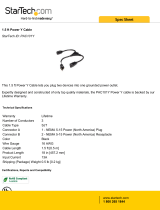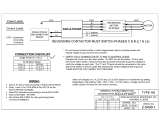
MANUAL MOTOR STARTER GUIDE
APRIL 19 3/80
Table of Contents
Foreword .................................................................................................................................................................................. 2
1. Standards and approvals for manual motor starters ...................................................................................................... 8
1.1 European directives applicable for manual motor starters ................................................................................................ 8
1.2 CE Marking ..................................................................................................................................................................................... 8
1.3 Standards for North America ..................................................................................................................................................... 8
1.4 CCC (China Compulsory Certification) .................................................................................................................................... 9
1.5 Other local approvals based on IEC-standard ........................................................................................................................ 9
1.6 Marine approvals .......................................................................................................................................................................... 9
1.7 Potentially explosive atmospheres (ATEX) .............................................................................................................................. 9
1.8 Applied standards ...................................................................................................................................................................... 12
2. General product overview ................................................................................................................................................ 13
2.1 Basic function .............................................................................................................................................................................. 13
2.1.1 Release (tripping element) ............................................................................................................................................... 14
2.1.2 Time-current characteristics (tripping characteristics) ........................................................................................... 14
2.1.3 Overload protection .......................................................................................................................................................... 15
2.1.4 Overload trip classes ........................................................................................................................................................ 15
2.1.5 Short-circuit protection ................................................................................................................................................... 15
2.1.6 Phase loss sensitivity ........................................................................................................................................................ 16
2.1.7 Single-phase and direct current (DC) loads ................................................................................................................. 16
2.2 Terms and ratings ........................................................................................................................................................................ 17
2.2.1 Rated operational voltage (U
e
) ........................................................................................................................................ 17
2.2.2 Rated short-circuit making capacity (I
cm
) ..................................................................................................................... 17
2.2.3 Rated short-circuit breaking capacity ........................................................................................................................... 17
2.2.4 Rated short-time withstand current (I
cw
) ...................................................................................................................... 17
2.2.5 Selectivity categories ....................................................................................................................................................... 18
2.2.6 Ambient air temperature compensation ..................................................................................................................... 18
2.2.7 Temperature rise of the manual motor starter ........................................................................................................... 19
2.2.8 Trip-free mechanism ........................................................................................................................................................ 20
2.2.9 Phase loss sensitivity........................................................................................................................................................ 20
2.2.10 Mechanical and electrical durability ............................................................................................................................ 20
2.3 Switch and breaker types ......................................................................................................................................................... 21
2.3.1 Motor protection circuit-breaker ................................................................................................................................... 21
2.3.2 Circuit-breaker ................................................................................................................................................................... 21
2.3.3 Load switch ......................................................................................................................................................................... 21
2.3.4 Disconnect switch ............................................................................................................................................................. 21
2.4 Product offering ......................................................................................................................................................................... 22
2.4.1 MS116 .................................................................................................................................................................................... 23
2.4.2 MS132 ................................................................................................................................................................................... 23
2.4.2.1 MS132-K ............................................................................................................................................................................ 23
2.4.3 MS165 ................................................................................................................................................................................... 23
2.4.4 MS132-T and MS132-KT .................................................................................................................................................... 23
2.4.5 MO132 and MO165 ............................................................................................................................................................. 23
2.4.6 Accessories and enclosures ............................................................................................................................................ 24
3. Load types .......................................................................................................................................................................... 29
3.1 General use and heaters ............................................................................................................................................................ 29
3.2 Motors ........................................................................................................................................................................................... 30
3.2.1 About motors...................................................................................................................................................................... 31
3.2.2 Squirrel cage motors ........................................................................................................................................................ 31
3.2.3 International motor efficiency standards and regulations ...................................................................................... 32
3.2.4 Rating plate of a motor .................................................................................................................................................... 37
3.2.5 Voltage ................................................................................................................................................................................. 38
3.2.6 Current ................................................................................................................................................................................. 38
3.2.7 Power factor ........................................................................................................................................................................ 39























